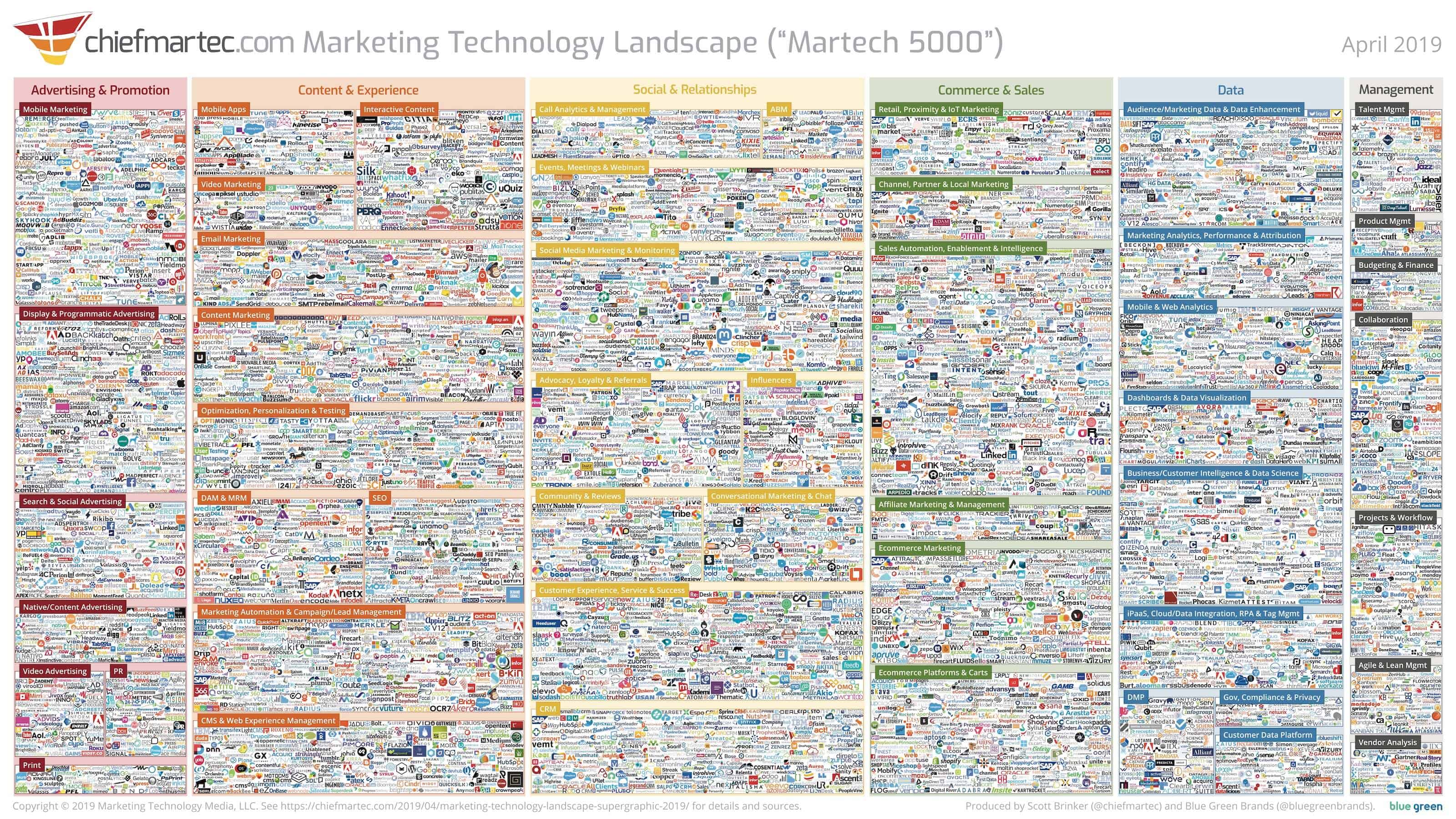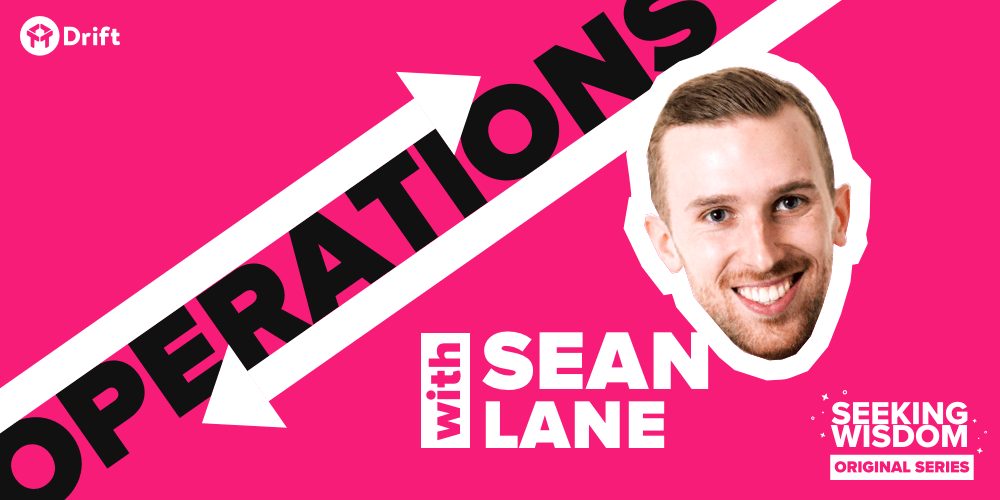
Wow. It wasn’t until I sat down to start writing this blog post that I realized I’ve been in the marketing operations space for almost six years!
And now here I am writing my very first blog post for all my marketing ops peers out there – hello everyone ?
Six years may sound like a long time. But for me it feels just like yesterday.
Because the martech space has been changing and growing like crazy.
Look no further than Scott Brinker’s 2019 Marketing Technology Landscape Supergraphic. In 2017, the number of martech solutions on the market hit 5,381. And in just two years, that number has ballooned to 7,040.
Like I said, the growth of the martech space is crazy.
I bet if you talk to 100 marketing ops people, you will get 100 unique marketing tech stacks with 100 different job descriptions.
And for me and my fellow MOPs pros, there’s never been a more exciting time to do what we do.
Why? Because we have a front row seat to the evolution of marketing.
And we’re not just witnessing it. We have an active role in shaping the future of marketing.
Think about it. Marketers are innovating all the time to stand out in this crowded market. They’re testing out new messages and scoping new tools and trying to find something that cuts through the noise. And who do they rely on to make it all happen on the back-end?
Marketing ops.
We get to be creative, strategic, and operationalize the whole thing. We get to build the engine.
I don’t know about you, but for me, this is where things start to get really fun.
But I also know that it can be overwhelming to be tasked with building and maintaining a marketing technology stack. And if I’ve learned anything from my time in the marketing ops space, it’s this: when you’re building your technology stack, it’s critical to ask the right questions so you know what you’re getting into.
That’s why I’m sharing this with you. It’s my cheat sheet. The six questions I ask to make sure I stay sharp when shopping for new marketing tools.
1. What is this really trying to solve for marketing or sales?
Have you ever gone to a website trying to understand what the company does…but then after five minutes of researching you still have no clue? For marketing ops pros who handle operations and processes, it’s crucial for us to know what the product is and the exact problem it’s trying to solve.
I get excited if I can watch a 3 minute demo video showing me the real platform. You know what they say – a picture is worth a thousand words. And since I’m responsible for building the marketing ops engine, I need to be able to see how a solution works so I can figure out how it would fit within my existing stack and how it would solve my team’s challenge.
2. Will I/the team survive our day-to-day if we don’t buy it?
This question is all about getting clarity. Is this solution a ‘nice to have?’ Or is it a ‘must have?’ There’s no gray area with this question. Another way to think about it is if your colleagues constantly mention the importance of one tool (or the same pain point), it’s another sign that it’s time to dig in.
3. What’s the alternative?
This is a must. Before making a buying decision, it’s important to compare the tool you’re evaluating with their competitors or similar offerings. And with all the martech tools out there, it shouldn’t be hard to find a few other options ?
It’s also just a good learning experience to expand your knowledge within a certain area of technology.
4. Can it do more? What else it can do?
Ask this question, even if you’re not ready or don’t have the budget available. As the keeper of the martech stack, it’s your job to have a finger on the pulse of your team’s needs – and the marketing technology landscape as a whole.
If you know the answer to this question, then you’ll be prepared when new tech needs crop up or new budget becomes available. And you can respond more quickly with an expansion or upgrade solution.
5. How robust is the product?
This is where you get to have some fun and ask some more technical questions so you can get a deeper understanding of how the product works. Some that I ask the most are:
- How easy can end users adopt this new tool?
- Can it talk to other systems and provide the flexibility for a seamless experience?
- How much underlying data can I access or pull for analytics?
- Does the system load fast enough so we don’t waste time in execution?
The main takeaway here? Ask as many specific and tactical questions as you can. Because this way, when it’s actually time to implement, you’ll already have the blueprint in your hands. No surprises.
6. How good are the customer support and professional services?
Once you purchase a product it’s not the end of the journey. And for marketing ops especially, it’s really just the beginning. Even though you’ve gathered a lot of information up front – you’re going to need help along the way. That’s why it’s important to know what kind of support you can expect from the vendor.
Because customer support or customer success can make or break a product experience.
Case and point – I once chose one product over another because their support team was more engaged, responsive, proactive, and helpful. The product offerings were similar enough. The support experience was the real differentiator.
So that’s how I think about adding new tools. But I always love hearing how my fellow MOPs peers approach it. Are there tried and true guidelines you use to help choose the best platform for your organization? I want to know – talk to me on LinkedIn here.







